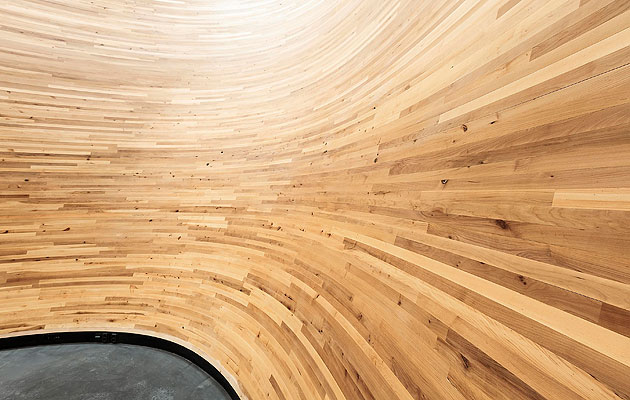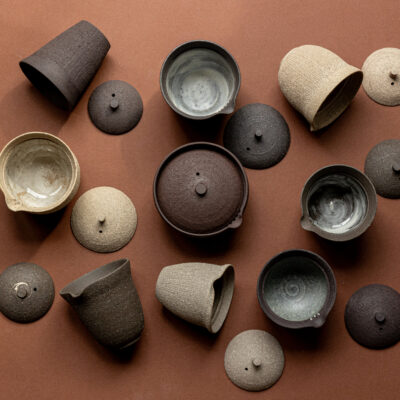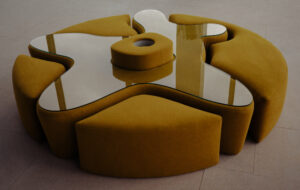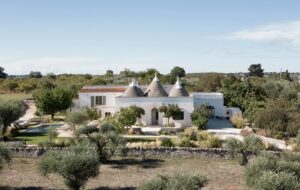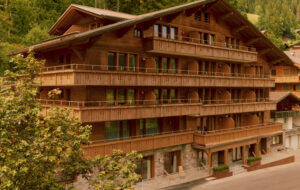|
|
||
|
The Kamppi Chapel of Silence is located in Narinkka Square, one of central Helsinki’s busiest shopping districts (though the day I visit only a few consumers are braving the snow and -20 degree centigrade temperatures). An unusual collaboration between the city and the Lutheran church, the non-denominational chapel does not offer religious services, but rather a meditative space from which to escape the bustle of city life. “It is very quiet,” says Mikko Summanen, principal at K2S Architects says. “You don’t hear the outside world when you’re inside – the wooden geometry is intended to encourage an atmosphere of contemplation where you can confront yourself or a higher being.”
The chapel can be approached from all directions and its hull-like form resembles an ark awaiting an impending flood. “We were interested in the flux of the city,” Summanen explains of its shifting rather than perfect shape. “What kind of geometry would that give?” The irregular butte does, indeed, look as if it has been moulded by pedestrian traffic. The spruce exterior fits together like a huge puzzle, each unique curving piece modelled on a computer. (86 percent of Finland is forest and the country’s architects are masters of building in wood: see ALA’s Kilden Performing Arts Centre in Icon 107.) The facade is covered in a nanotech wax that can withstand harsh weather. The internal walls are constructed using wide planks of oiled alder. The chapel resembles a huge wooden bowl that has spun out of shape on the lathe. “It is a rather intimate space,” Summanen says of the windowless interior, “with a sense of verticality.” The ceiling is 11m high and seems to float in a halo of light. The indirect illumination, Summanen observes, creates “a dim atmosphere, with not too much light – like in an old Scandinavian wooden church”. About 60 people can be accommodated on plain wooden benches and the black concrete floor will resist their snow-trudging feet. You enter this sacral space from the square through a glass annexe: “You are still in the city, in concrete, in a very horizontal space,” Summanen says, “and then you enter through a wooden wall into a free form, a vertically enclosed volume.” All support functions are housed in this secondary building, which includes private meeting spaces where visitors can choose to consult with either a priest or social worker.
|
Image Tuomas Uusheimo
Words Christopher Turner |
|
|
||

